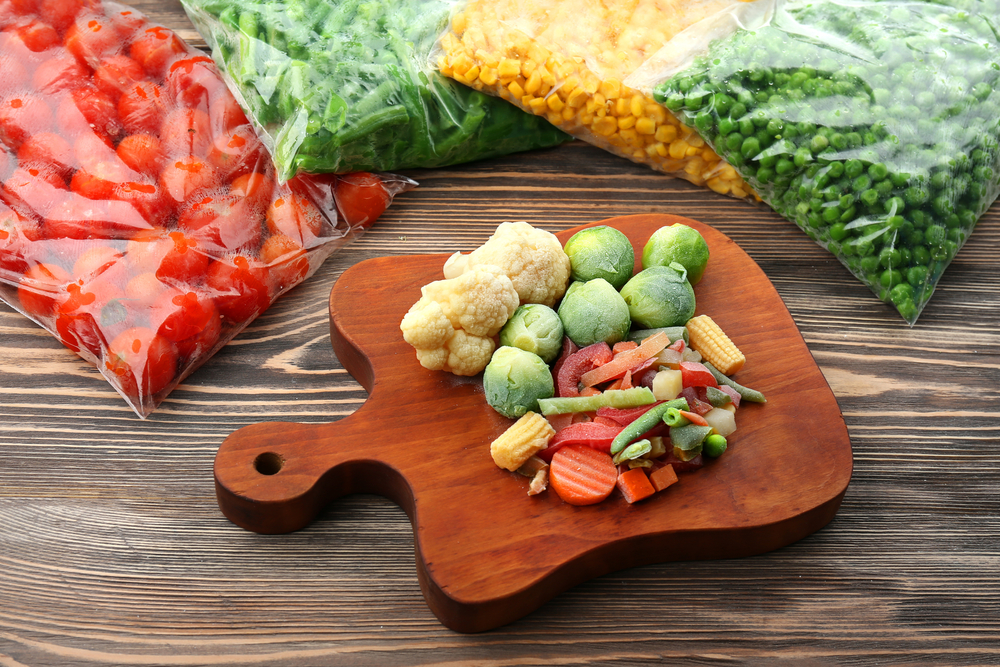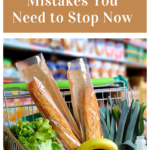
Saving money is critical for caregivers and for seniors. But, working out how to do this isn’t always so easy and food shopping mistakes can make things much worse.
Did you know that many of us make simple mistakes at the grocery store, ones that end up costing us money in the long run? Some of those mistakes even compromise health as well.
This post highlights some of the most significant issues and ways that you can get past them.
Once you’ve got the shopping down pat, you can turn to other ways to make your life better. Check out our lists of power bowl recipes and soft foods, for recipes that will make your mealtimes that much more exciting.
Grocery Shopping Mistakes
- Shopping for Food Too Often
- Shopping Without a List
- Not Planning Your Meals
- Shopping When Hungry or Tired
- Shopping With Someone Else
- Buying Too Much Produce
- Buying Snacks from Convenience Stores
- Buying Out of Season
- Avoiding Frozen Fruits and Veggies
- Avoiding Canned Foods
- Focusing on Organic (and the like)
- Choosing Brand Name Products
- Throwing Away Produce if It Starts Going Bad
Shopping for Food Too Often
We all do it. Forget one thing when we’re shopping and have to go back the next day.
Not only is that process frustrating, it’s also expensive.
When we do go back to the store, we often end up spending more than we intended to. We might only find a couple more items but that extra cost adds up.
Avoiding this pattern takes a little more planning but it’s achievable. Focus on having a list so you get all the essentials. And, if you miss something, don’t be tempted to go back for it – unless it is critical. Most of the foods you miss you’d be just fine without until your next shop.
Shopping Without a List
Grocery lists are a pain and they’re so easy to forget. But, shopping without one is a recipe for disaster. Even if you have the most amazing memory, you’re bound to forget some things that you intended to buy.
Lists have another purpose too – they help prevent excessive purchasing.
For example, some families say that they’ll only buy what is on the list, regardless of what looks good at the store. Or, they may have a certain number of ‘free’ items. That might mean they can buy three products that aren’t on the list. This is a good way to stick to a budget, while still allowing for treats.
If you tend to make lists and forget them, consider a digital solution. There are many apps now that allow you to create a grocery list. You can also just write the list by hand and take a photo on your phone. That way you still have it with you, even if you forget the physical list.
Not Planning Your Meals
Many of us aren’t in the habit of meal planning. Even if we have a shopping list, we mightn’t know what we’re going to eat and when.
Having a meal plan in place before you shop is critical. It helps make sure you have everything you need and helps you to avoid other food shopping mistakes too.
This also gives you more flexibility. If you know which meals you are going to have – you can make some substitutions based on current specials.
Shopping When Hungry or Tired

This is another common pattern. It’s easy to shop when you’re hungry or tired, especially if you left your shopping to the last minute.
But, doing so dramatically increases the risk of impulse purchases – even if you’re being careful.
Even if you’re carefully following a list, the way you feel will influence the food that you end up buying. If you’re hungry, you’ll often find that you buy too much, or you lean towards food that looks or smells amazing.
Something similar happens if you’re thirsty actually. If you shop when thirsty, you might find yourself buying much more liquid than you would normally. And, if you shop when you’re hungry, thirsty, or tired, you might be making unhealthy decisions about your food.
Shopping With Someone Else
Whenever possible, try to shop alone. This gives you more time to think and helps make sure you remember what you’re meant to be buying (and avoiding).
When you have someone else with you, it’s much easier to forget something or to buy the wrong things.
Buying Too Much Produce
Fresh food looks amazing and it’s easy to buy too much of it. Many of us stock up because we’re trying to promote our health. That’s a great goal – but produce doesn’t last very long.
Buy too much of it and you’ll find that you don’t get to eat it all.
You may also find yourself spending money on produce that you don’t actually need. Some items may look extremely appealing but aren’t any better than the less trendy options.
Buying Snacks from Convenience Stores
Convenience stores are quick and easy ways to get food – but man are they expensive! Even the cheap snacks add up fast, especially if you visit multiple times in a week.
You can get the same types of snacks from the grocery store with a little more planning.
Try buying dried fruit and nuts in bulk and then portioning them out yourself. The same is true for chips. You can even get creative with bento boxes and similar items, to make easy snacks that you can grab and go.
Buying Out of Season
We all have our favorites. But, buying food out of season gets expensive fast. Stick to what’s reasonably priced even if that excludes some of your favorites.
Besides, out-of-season produce never tastes as good.
Avoiding Frozen Fruits and Veggies

The frozen foods section hosts many unhealthy foods, including microwave dinners that really do taste like cardboard. But, that doesn’t mean you should skip the area entirely.
Frozen fruits and veggies are still great ways to get your nutrition. They’re often inexpensive as well. Plus, they last much longer than anything you buy fresh.
I know, frozen vegetables don’t sound all that healthy. But, they are.
Some beneficial compounds are lost during the freezing process, just not as many as you’d expect. In contrast, fresh vegetables (and fruit) lose nutrients from the time that they are picked to the time that you eat them.
The end result is that the nutrients for fresh versus frozen are roughly the same. This also gives you a less expensive option than trying to buy fruit (like blueberries) out of season.
Avoiding Canned Foods
The same applies to canned foods. You need to be very careful about what you buy, of course, as many canned foods have extra additives and ingredients. But, there are also healthy options out there.
Canned beans and canned tomatoes are both good choices. There are low salt varieties that you can choose from too. And, of course, we can’t forget about canned tuna.
Canned foods are often cheaper. But, more importantly, they last. This means you can keep them in your cupboard for when you’re short on ingredients or when the pickings are slim for fresh foods.
Focusing on Organic (and the like)
We get it, organic may offer more health benefits. The same is true for grass-fed meat and wild caught fish. But, the price difference is often dramatic.
And honestly, the nutritional difference isn’t as strong as you might expect. You’re still going to get many health benefits from eating conventional foods and you’ll save yourself a lot of money in the process.
A good indication is this – don’t buy organic if it means you’re buying less fruit and vegetables. The tradeoff simply isn’t worth it.
Choosing Brand Name Products
In some cases, a branded product simply tastes better.
But, that’s not always true. Non-branded products often have the exact same ingredients. They might even be the same product, just with a different label.
If nothing else, avoid brand names for any pantry staples, like rice or oats. The food is often the same each time. You gain nothing by choosing the branded version instead.
You can also try things out. Experiment with non-branded items and see which ones taste good to you.
Throwing Away Produce If It Starts Going Bad
If your produce is past its best, the natural reaction is to throw it out. But, that’s horrible financially and it’s just a waste.
Instead, look for alternatives.
For example, overripe fruit works perfectly in many smoothies (this is particularly true for bananas). You can even freeze the fruit if you’re not going to use it immediately.
The same is true for many vegetables. Various recipes are also perfect for produce that needs to be used quickly, including stir-fries and soups. Find a few recipes that you love and keep them on hand so that you always have something to do with your produce.
What do you think? Have we missed any key shopping mistakes?


Leave a Reply